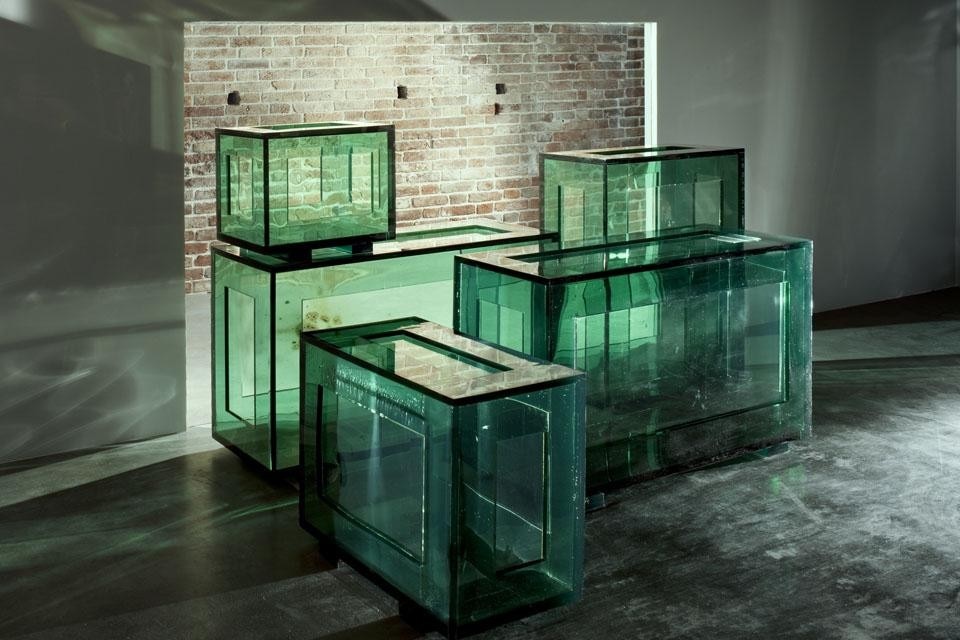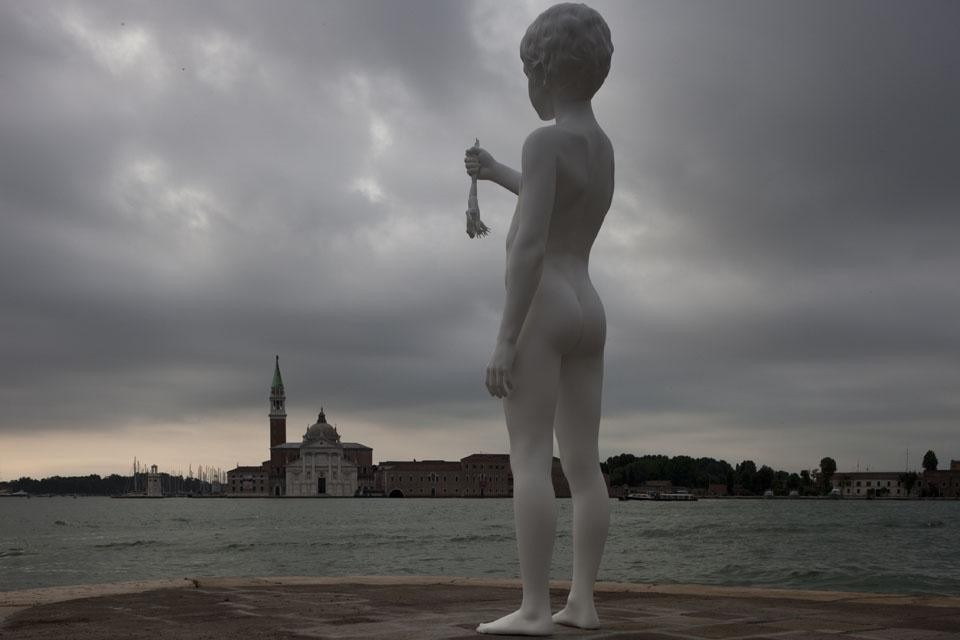Like previous shows, this one was curated by Caroline Bourgeois who has chosen to propose "doubt in its most essential dimension," starting with space itself. Each artist enjoys his or her own space, or room, with the exception of the first, where different untitled pieces follow one another: the horse with its head wedged into the wall by our Maurizio Cattelan located under the truss; three elegant and detached sculptures by Donald Judd—the vertical column, stacks (1966), steel rectangular multiples (1968) and wood multiples (1989)—which inhabit marvellously the textured walls in red clay brick, the same as those found in the Roman basilicas; here, whether they are new or recovered, they show the erosion caused by salt water over the centuries.

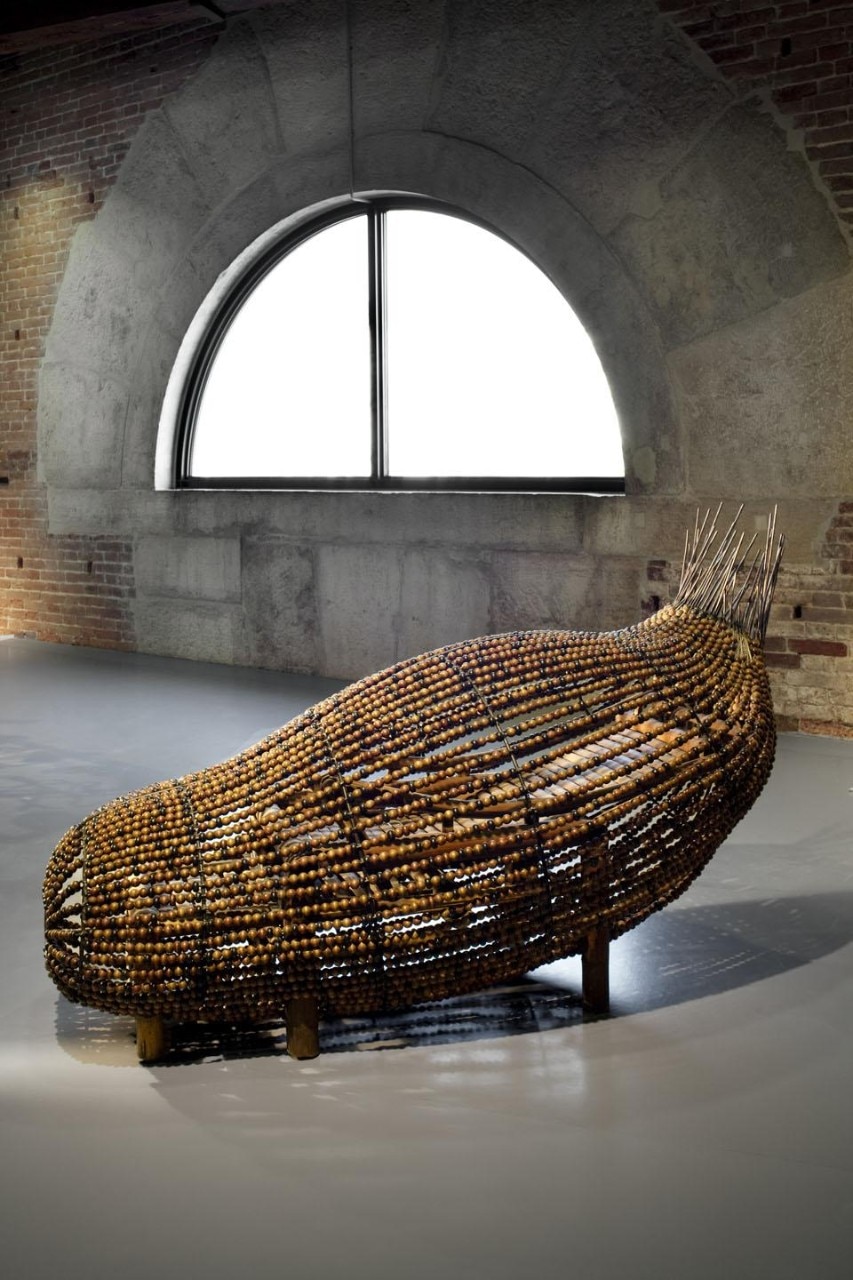
In a recent interview Martin Bethenod, director of Palazzo Grassi and Punta della Dogana, pointed out the importance of space planning, underlining the evident need to create a balance between permanent and temporary exhibits, between exhibit/events and longer-running shows. "At Punta della Dogana, the rhythm is the same as that used by major museums for rotating the collections. The works remain on display for about 18 or 20 months. Sometimes they stay longer because, as time passes, we realize that they inhabit the space to the point of feeling at home".
This is precisely the case of Sigmar Polke's Axial Age created for the Venice Biennale in 2007. They are large-scale pieces on canvas painted with pigments, characterized by a small number of figures that appear and disappear depending on the position of the viewer and light.
During the presentation of In Praise of Doubt, Bourgeois wanted to clarify that, in conceiving the show, she chose to work on the 'complementarity' of extremes.
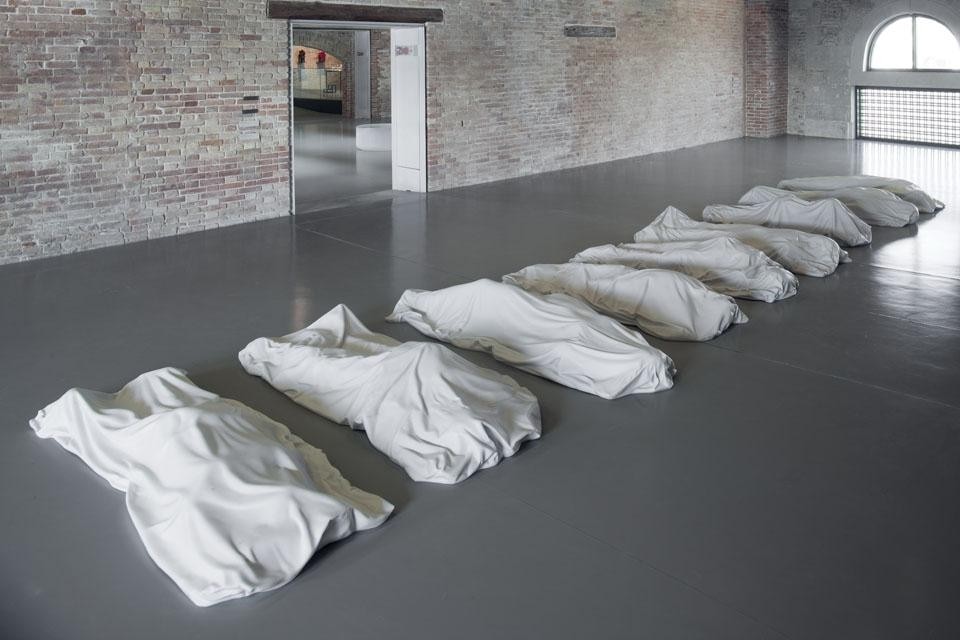
During the presentation of In Praise of Doubt, Bourgeois wanted to clarify that, in conceiving the show, she chose to work on the "complementarity" of extremes. From a pure and minimalist Judd, she reaches the reflection on the dark side of abject humanity reproduced Roxys a 1940s brothel by California artist Edward Kienholz (1960–61). She then moves to the work of Paul McCarthy (Salt Lake City, 1945), in which female mannequins in irreverent poses are topped with disproportionate and ordinary male heads. The room is completed with a series of bronze busts of dignitaries entitled Pirates Heads, in which the features of their faces are characterized by conspicuous grafts of male sexual organs.
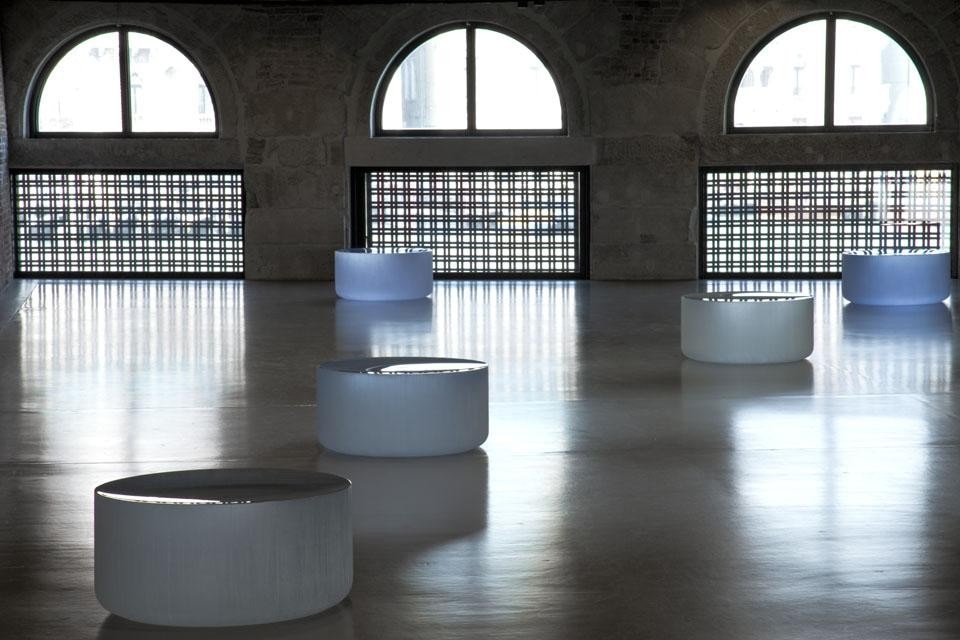
Through minimal gestures, the artist has worked on contrast: Well and Truly, as the piece is entitled, is composed of several round works that refer to the idea of both water and sky. Their color, just like those two elements, changes with the time of day. In a conversation, Horn compared her sculptures to the writings of Emily Dickinson in which she maintained that "there is no narrative structure to cling to, there is nothing that can be identified or whose identity can be separated from experience," and concluded, "this is the kind of experience I'm trying to offer in my work."
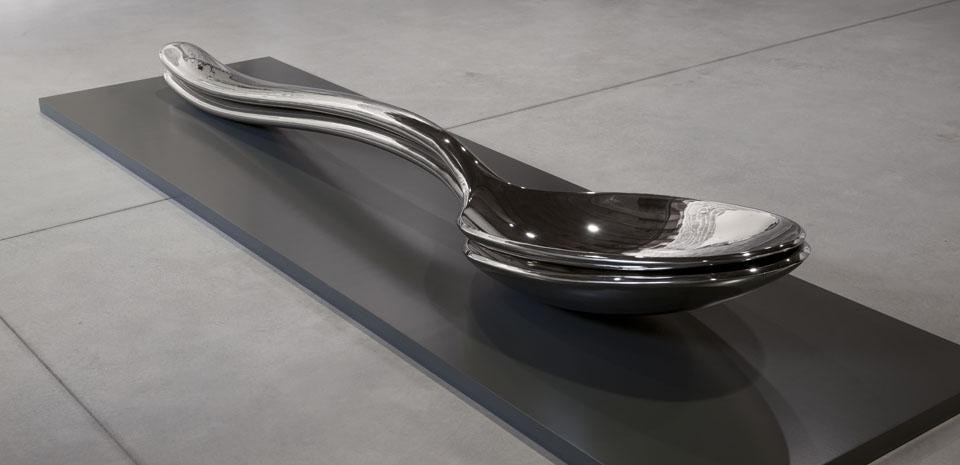
Of all the works in the collection, the one that seems to have most captured the public is Boy with Frog; placed outdoors, on the edge of the Punta della Dogana, it was commissioned by François Pinault from Charles Ray in 2009.
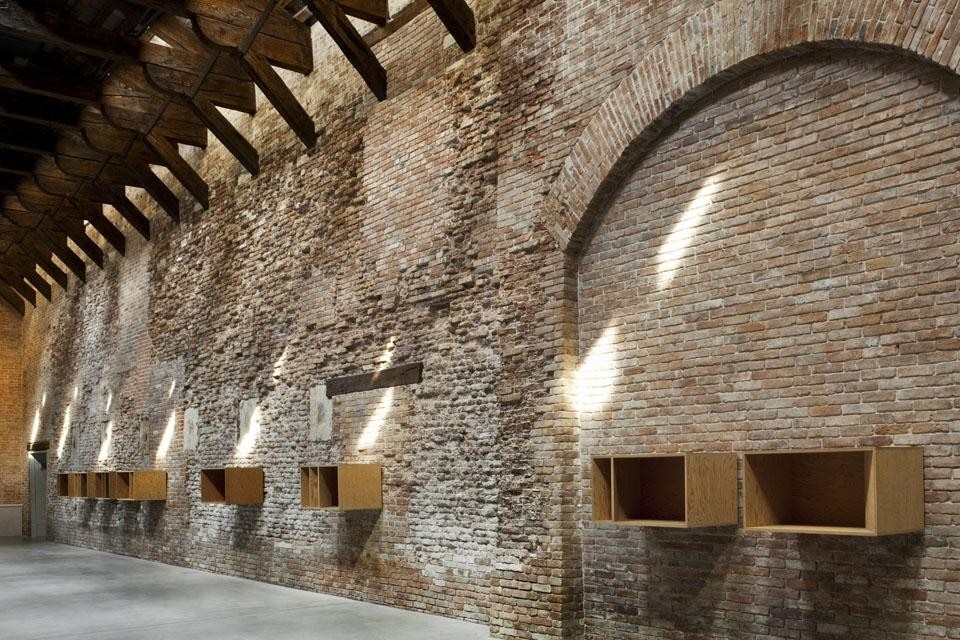
Riccarda Mandrini
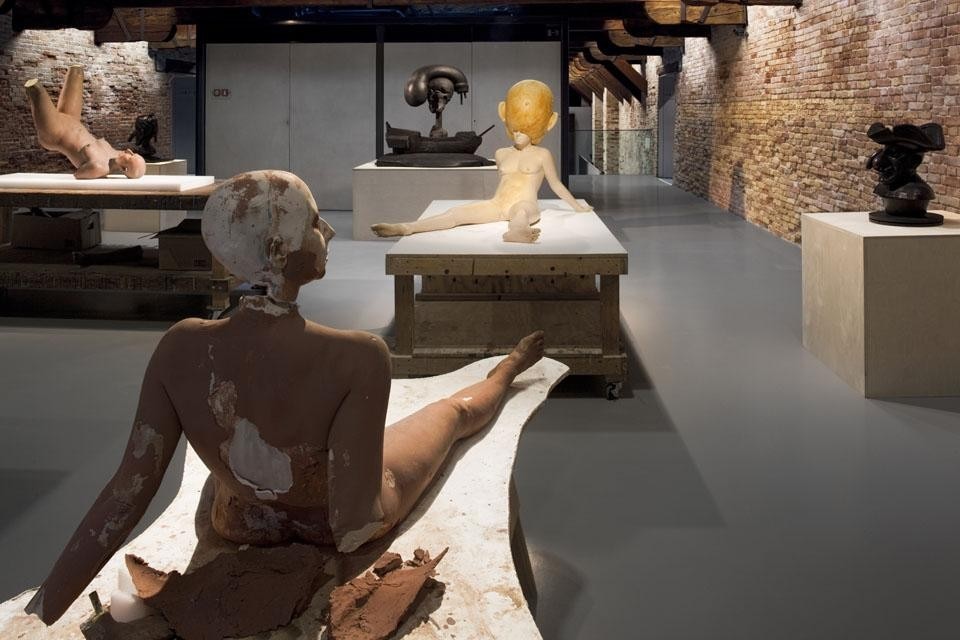
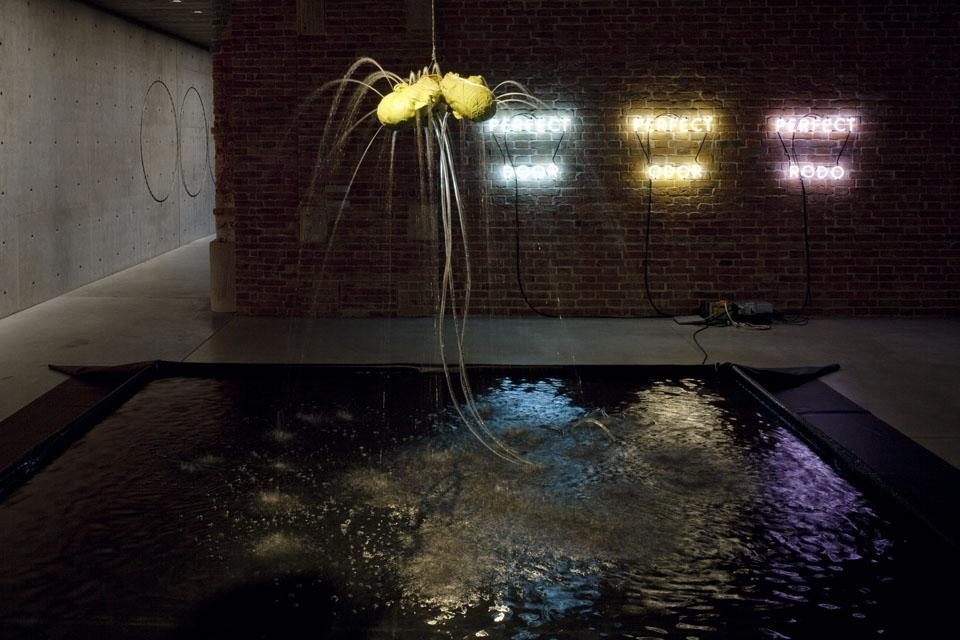
Perfect Door, Perfect Odor, Perfect Rodo, 1965. Neon tubing with clear glass tubing, suspension frames. 3 parts, 54.4 x 73.3 x 5.7 cm. B. Nauman by SIAE 2011. © Palazzo Grassi.
